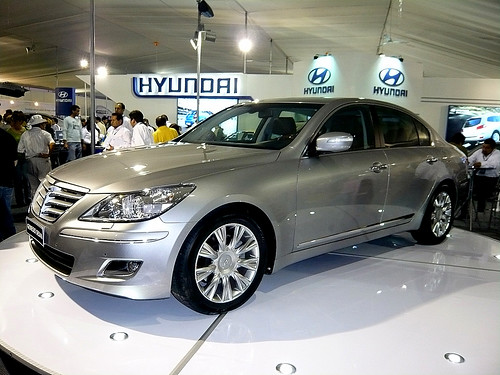America’s love for Korean Hyundai! WSJ explores the reason why Hyundai is a hit in the US…
(Source: Wall Street Journal)
Today’s WSJ had a nice article about the Korean Automaker, explaining what makes it a successful car in the US. Worth a read..
….The leading Korean car company’s name rhymes with the first day of the week, as in “Hyundai, Bloody Hyundai.” Which is pretty much what the company’s competitors are saying to themselves these days about Hyundai’s remarkable success over the past few years.
Last year Hyundai’s global sales bucked the industry’s decline and rose 5% to 4.2 million cars and trucks. Even in the U.S., the world’s most competitive car market, Hyundai’s sales rose 0.8% in the first eight months of this year, while Ford’s sales dropped 25% in the same period and GM’s plunged 35%. The major Japanese auto makers suffered declines between 25% and 30%.
Hyundai’s success stems from a sustained corporate effort at reinvention—the very same word General Motors is using to describe its mission these days. The Hyundai story should provide GM with a road map.
For years, Hyundai enjoyed a protected home market in Korea. This ensured its prosperity there, but the lack of competition meant the company didn’t develop the product quality or consistency to compete effectively in international markets. The result: Hyundai’s initial U.S. success in 1986 was undercut quickly by quality problems.
A decade ago, Hyundai acquired Kia, a victim of a mid-1990s shakeout in the Korean auto industry. It also established a new quality-control division charged with boosting reliability by emulating Toyota’s vaunted manufacturing methods. To allay lingering concerns over quality, Hyundai put warranties of 10 years or 100,000 miles on vehicles sold in America.
Their campaign began to show results, and the big breakthrough came in 2004, when Hyundai tied Honda for second place in the prestigious J.D. Power & Co. Initial Quality Survey. Also that year, Hyundai completed its first U.S. assembly plant, near Montgomery, Ala.
On the marketing front, last January the Hyundai division launched an innovative “Assurance Program” in the U.S.: Buyers return their cars if they lose their job within a year after their purchase. The offer generated buzz and resonated with the public, as Hyundai’s recent U.S. sales results demonstrate, even though buyers have turned in fewer than 50 cars under the program, which continues through year-end.
…..Both U.S. companies will have to make their marketing more relevant. Hyundai’s 10-year warranties and the “Assurance Program” succeeded because they addressed specific customer concerns—the former about the brand’s reliability, the latter about the economic environment…….
Click here to read the entire article.



